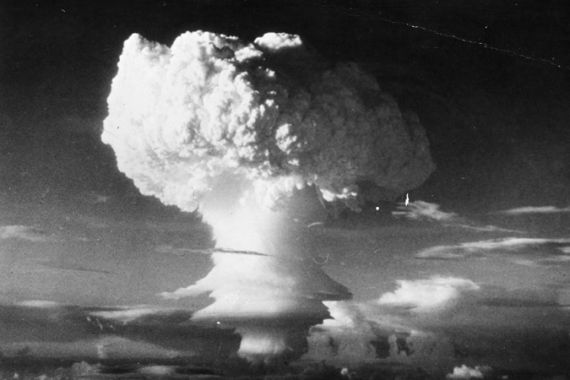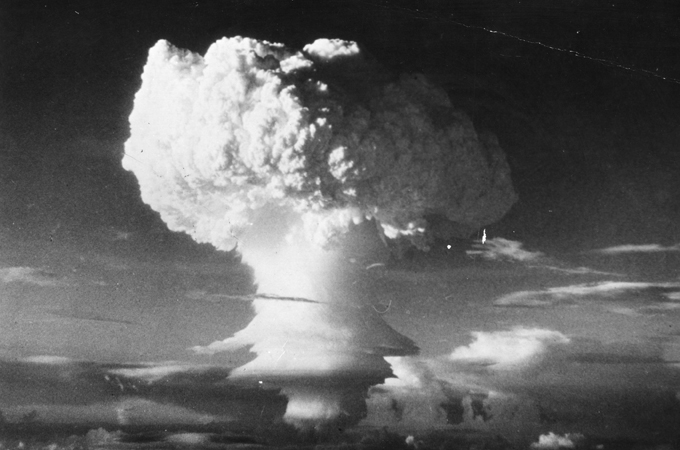Nuclear lessons unlearned
How many more chances will we have to learn from the nuclear failures of the past?

 |
| Since 1961 some 200 nuclear bombs have been exploded, mostly in the atmosphere [GALLO/GETTY] |
Much of the world marked the 50th anniversary in early August of the Berlin Wall’s construction. But, while that Cold War abomination has truly been consigned to history’s dustbin, September 1 marks another 50th anniversary, one that resonates far more directly today.
As of 1961, some 200 nuclear bombs had been exploded, most of them in the atmosphere, but two on the Japanese cities of Hiroshima and Nagasaki. Three years earlier, in October 1958, nuclear testing had ground to a halt after the United States, the Soviet Union, and the United Kingdom agreed on a moratorium. During most of this period, one could get the impression, although it was deceptive, that nuclear testing was actually over.
But the moratorium had been fragile from its very beginning, with nuclear-weapons establishments pushing hard for a resumption of testing. Like the run-up to an earthquake, political tension was building behind the scenes. It peaked with the construction of the Berlin Wall in August 1961. Then, on September 1, the Soviets broke the moratorium, joined shortly thereafter after by the US.
What followed was a veritable nuclear-testing frenzy. More than 250 tests were conducted in the 16 months following the aborted attempt to put the nuclear genie back in its bottle – more explosions than in the 16 preceding years. One test explosion set the infamous record for the largest-ever manmade explosion: the Soviet Tsar bomb, detonated on October 30, 1961, was the equivalent of 4,000 Hiroshima bombs. It is no coincidence that a year later, in October 1962, the world found itself on the brink of nuclear war during the Cuban missile crisis.
While the barrage of nuclear tests poisoned the political climate, it also literally poisoned Earth’s atmosphere and environment. With her “Baby Tooth Study”, the American physician Louise Reiss, who died earlier this year, proved in the 1960s that radioactive fallout from nuclear testing had entered the food chain – and thus into human babies – all across the US. Some isotopes linger for tens of thousands of years. Plutonium-239 from a nuclear test conducted at the end of the Stone Age, for example, would have lost a mere sixth of its radioactivity by now.
Unfortunately, the lesson was not heeded. Nuclear-weapon lobbies triumphed. The distrustful Cold War mentality had taken its toll, with both sides regarding nuclear weapons as the ultimate guarantor of their own security, but a threat in the hands of the other. The inability or unwillingness of either side to put itself in the other’s shoes, a precondition for any compromise, kept both locked in a spiraling arms race. The blasts continued – albeit underground – and increased greatly in number.
Today, 50 years and 1,500 nuclear explosions later, we have an historic opportunity to learn from the failures of the past. The Comprehensive Nuclear-Test-Ban Treaty (CTBT) bans all nuclear explosions, everywhere, by everyone. It represents a strong norm – testing virtually screeched to a halt in 1996, when the Treaty became available for countries to adopt. More than 180 countries, 90 per cent of the world’s countries, have signed it and committed themselves to a planet free of nuclear explosions.
Compared to the 500 nuclear explosions witnessed each and every decade during the pre-CTBT period, the last ten years witnessed only two tests, both carried out by North Korea. While this was still two tests too many, the CTBT clearly has helped force the test genie back into its bottle – and keep it there.
But the Treaty hasn’t yet entered into force. Nine countries must first ratify it. Until then, nuclear tests are not outlawed, and their absence relies on moratoria. Unfortunately, history has shown just how unreliable moratoria can be.
As a result, we could see yet another volley of blasts, another obscene megaton-range competition, and another fatal countdown between nuclear-armed states, whose numbers have increased. Only after the Cuban Missile Crisis – humanity’s closest encounter with nuclear Armageddon – did US President John F Kennedy and Soviet Premier Nikita Khrushchev grasp the security risks of unchecked nuclear competition and the merits of a test ban to stop it. Only then did they really try to reach a comprehensive ban on nuclear testing – and failed.
How many more chances will we have to learn from the nuclear failures of the past?
Tibor Tóth is Executive Secretary of the Preparatory Commission for the Comprehensive Nuclear-Test-Ban Treaty Organisation.
A version of this article first appeared on Project Syndicate.
The views expressed in this article are the author’s own and do not necessarily reflect Al Jazeera’s editorial policy.
